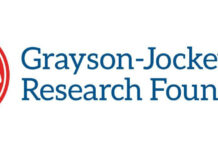The National Human Genome Research Institute announced the first assembly of the completed horse DNA sequence on Feb. 7, 2007. Why would a human health agency perform DNA sequencing on a horse? The answer is that the genetic structure and function of all mammals are similar. The best way for scientists to understand human DNA sequences is to compare the genome sequence from 24 different mammals to see what DNA sequences are so important as to be present in all species.
Genome is a new word. What does it mean? Genetics is the study of one gene at a time. Horses and other mammals have roughly 20,000 to 25,000 genes. When we consider all genes, we call that set a genome and its study genomics. Since genome organization is similar among all mammals, information from human medical studies helps us to better understand horse diseases. We have long used humans as a model for equine diseases, so this approach is nothing new.
Nevertheless, genomics will benefit equine health research as profoundly as vaccines, antibiotics and radiographs.
Some horsemen may worry that once the horse genome is sequenced, all the mystery and magic will be gone from horse breeding and ownership. Colorful characters around a racetrack may be replaced by colorless scientists with computer printouts and test tubes. Fear not! The study of the horse genome is more like studying the weather than inventing a sports car. Consider the following. All of the research on weather has shown we can experience a sunny day in Florida, knowing that a hurricane will arrive in two days, but we cannot change the hurricane. Still the knowledge allows us to make choices; when the hurricane approaches, we can abandon our town or we can shore up its foundations. Successful use of genomic tools will help horse breeders, veterinarians and horse owners do what they already do even better … anticipate problems, predict outcomes and enjoy the unique interaction between horses and people.
Even before the horse genome was sequenced, DNA tests had been developed for inherited diseases of horses as well as many coat color patterns. So far, breeders can test horses and determine the chances of transmitting genes for the following disease traits to their offspring: hyperkalemic periodic paralysis of Quarter Horses (HYPP), severe combined immunodeficiency disease of Arabian horses (SCID), overo lethal white foal disease of paint horses (OLWFD), junctional epidermolysis bullosa of Belgian horses (JEB), glycogen branching enzyme deficiency of draft horses (GBED), and hereditary equine regional dermal asthenia of Quarter Horses (HERDA). In the near future, we may have the genes for other simple hereditary diseases identified.
Color genetics also has improved from the availability of these new tools. Genetic tests are available for black/chestnut (MC1R), bay/black (ASIP), cream dilution (MATP), Frame overo (OLWFD), sabino 1 (KIT) and tobiano (KIT). The acronyms in parentheses refer to the actual genes involved in these conditions. Although the gene has not yet been identified for these particular colors, mapping studies have localized the genes for gray, Appaloosa, dominant white and roan.
As athletic working animals, horses have been selected for health and performance over thousands of years. Consequently, horses have few purely genetic diseases. The real benefit of genomics for horses will be to understand complex diseases that have frustrated horse owners and veterinarians since the time of domestication. These conditions affect the musculoskeletal system (osteoarthritis, tying up, contracted foals, osteochondrosis, navicular disease, laminitis, congenital limb deformity), allergic diseases, respiratory diseases (recurrent airway obstruction, heaves, exercise-induced pulmonary hemorrhage) and infectious diseases (vaccine development for viruses and bacteria).
Why do these problems exist for a species highly selected for health and performance? We don’t know. It may be related to the complex interplay of genes and our social needs. Sometimes it can be inadvertent. For example, hyperkalemic periodic paralysis in Quarter Horses is caused by a single change in a DNA molecule that disrupts potassium metabolism in muscle cells. The muscles undergo spontaneous and aberrant contractions, similar to isometric exercises, resulting in a muscular appearance. Unfortunately, such horses may collapse under the stress of muscular exertion. We expect that selection for large muscling in Quarter Horses led to selection for the HYPP gene. Likewise, selection for small size in Miniature Horses may inadvertently lead to selection for genes causing dwarfism. The point is to understand the interplay of genes and management, then allow breeders and horse owners to continue doing what they have always done, while making informed choices.
The horse genome sequence is going to accelerate research and save hundreds of thousands of research dollars. Before now, many scientists would begin projects by spending months cloning and sequencing DNA for the gene of interest. When the horse gene was entirely unknown, scientists would use information from humans, mice or rats to provide a “best guess” starting point. Now, with the whole genome sequence, anyone with access to the Internet can circumvent this tedious spadework. The availability of this information means that one does not need to be a molecular geneticist to use the information. We anticipate successful research projects and solutions for the most important diseases of horses during the next couple of years using the tools derived from this work.
Breeders and horse owners always want to know how to get the most enjoyment out of their horses. This information will allow us to fashion management practices and veterinary care to keep these horses healthy and performing. The horse genome sequence is going to have an impact on health as significant as the discovery of radiographs, antibiotics and vaccines in previous centuries.
Several foundations and universities have initiated equine genetic research. The Morris Animal Foundation is sponsoring an Equine Consortium for Genetic Research grant, involving 32 collaborating researchers from 18 academic institutions. The sequenced horse genome will be used by the researchers to study and identify those genes and mutations that contribute to heritable diseases, such as musculoskeletal disease, laminitis, recurrent airway obstruction and bone disease. Other funded research by the American Quarter Horse Foundation and Grayson-Jockey Club Research Foundation support grants for a variety of investigations into gene response to disease.
Contact Morris Animal Foundation (www.morrisanimalfoundation.org), American Quarter Horse Foundation (www.aqha.com/foundation), Grayson-Jockey Club Research Foundation (www.grayson-jockeyclub.org), the American Association of Equine Practitioners Foundation or your favorite veterinary school to help support equine genetic research.
For information about how to make donations for equine research, contact the AAEP Foundation (www.aaepfoundation.org), or call (800) 443-0177 (within the U.S.) or (859) 233-0147. This is just one of the many efforts that the AAEP is coordinating on behalf of the industry through the Equine Research Coordination Group (ERCG), which is comprised of researchers and organizations that support equine research. Organized last year with a mission of advancing the health and welfare of horses, the ERCG promotes the discovery and sharing of new knowledge, enhancing awareness of the need for targeted research, educating the public, expanding fundraising opportunities and facilitating cooperation among funding agencies.
The mission of the Equine Research Coordination Group (ERCG) is to advance the health and welfare of horses by promoting the discovery and sharing of new knowledge, enhancing awareness of the need for targeted research, educating the public, expanding fundraising opportunities, and facilitating cooperation among funding agencies.
The ERCG is a group comprised of researchers and organizations that support equine research. Participants in the ERCG include equine foundations and multiple university research representatives. Current participants include: AAEP Foundation, American Horse Council, AQHA Foundation, Grayson-Jockey Club Research Foundation, Maxwell H. Gluck Equine Research Center, Morris Animal Foundation, Havemeyer Foundation, United States Equestrian Federation Foundation and University Researchers including: Noah Cohen, VMD, PhD (Texas A & M University), Greg Ferraro, DVM (University of California – Davis), Eleanor Green, DVM (University of Florida), Dick Mansmann, VMD, PhD (North Carolina State University), Wayne McIlwraith, BVSc, PhD (Colorado State University), Jim Moore, DVM (University of Georgia), Rustin Moore, DVM, PhD (The Ohio State University) and Dr. Nat White DVM (Virginia Tech). For more information about the ERCG, please visit online at https://www.aaepfoundation.org and click on the ERCG link.






